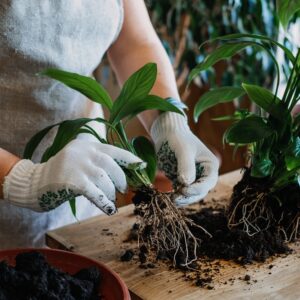
We all know that in our Thanksgiving Address, the Diohe’ko, the Sustainers of Our Life, are acknowledged and thanked for the help they provide. In our annual cycle of ceremonies, planting and harvesting are a significant part of the old way of life. In fact, you would not have the ceremonies if you were not actively involved in planting. Through planting, you get to understand the role that the fertile Mother Earth, the warmth of the Elder Brother the Sun, the fertility offered by the Grandmother Moon and Stars, the power inside each seed, and the life sustaining power of the rains brought by the Thunderers, all of which we acknowledge in the Thanksgiving Address and longhouse ceremonies. It is about our survival.
The agricultural tradition therefore sets an annual rhythm to life among the Hodinöhsyo:nih, as the ancient practices of preparing the fields, planting, nurturing the crops, harvesting and preparing foods continue to hold the clans together in activities that benefit the entire nation. Farming is a cultural activity that has kept much of the traditional philosophy intact.
Gardening puts food on the table and builds a strong, cooperative society. “Our growing- up years were really based around agriculture. If it wasn’t for the farm, we would have had a hard time. As I look back, I feel that we were rich even though we didn’t have money,” says Norton Rickard, a Tuscarora of the Bear Clan, who continued the family traditions of growing corn. He recalled how plating, cultivating and husking bees became great social events. Until he died, about 75% of the food the Rickard family consumed were things that grew in their extensive gardens.
The Hodinöhsyo:nih of the past practiced what is called mound agriculture, heaping up the dirt into small mounds about 48 inches in diameter, located about five or six feet apart. Three to five corn seeds were planted on the top of the mound. Pole beans were planted around the corn stalk, and squash was planted around the base of the mound. The corn stalks provided support for the beans. The roots of the beans create nitrogen that feeds the corn. The large leaves of the squash kept the mound moist and controlled the weeds.
The use of mounds kept the soil fertile as people did not compact the soil by walking on it. The stalks, roots, vines and leaves would become mulch to enrich the soil. Teams would conduct two hoeings during the growing season to knock down any weeds. Sometimes, entire fields on bush beans would also be planted. In between the mounds Sunflowers, Jerusalem artichokes, potatoes or other crops were planted.
Jane Mt. Pleasant has conducted research to show that 17th century Seneca women farmers in the Genesee Valley produced a higher nutritional yield per acre than farmers in Europe. And, this was done without the use of plowing or artificial fertilizers. In 1687 the French invades Seneca Country to find over a half-million bushels of corn stored in the village of
Ganondagan. That is an amazing feat, and we have to marvel at all of the planning and coordination it would have taken to produce such a harvest. Mt. Pleasant believes that this was ‘woman’s work’ that resulted in uplifting the status of women within the society because they were the primary ‘economic’ engine in those days. Rick Hill is the Senior Project Coordinator for the
Deyohahá:ge: Indigenous Knowledge Centre.










